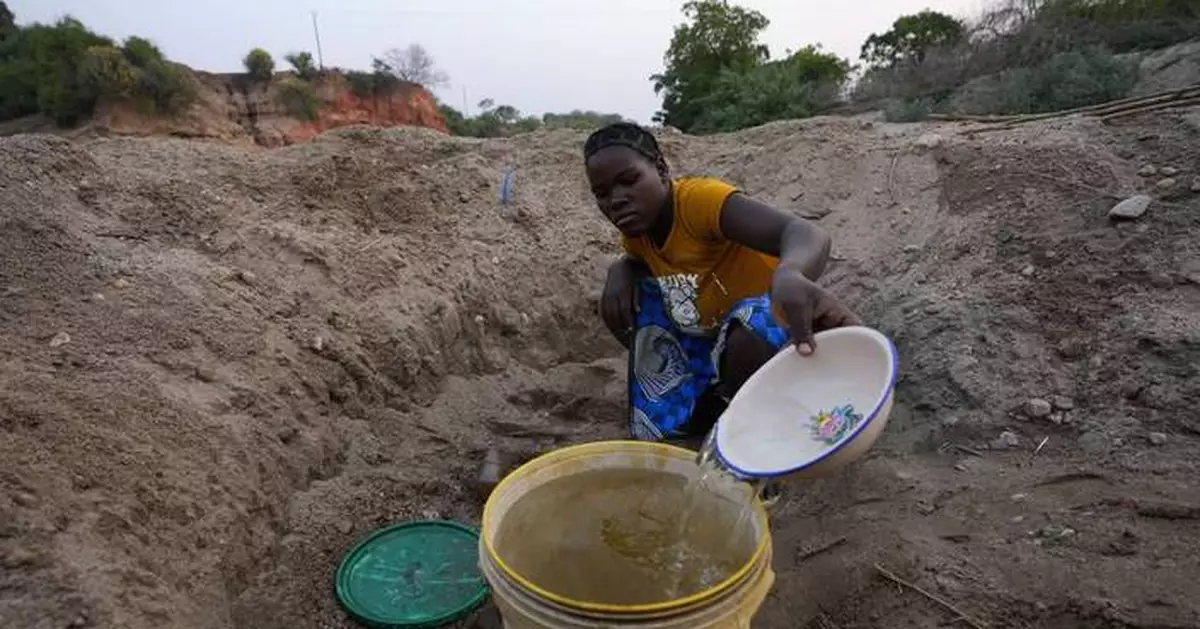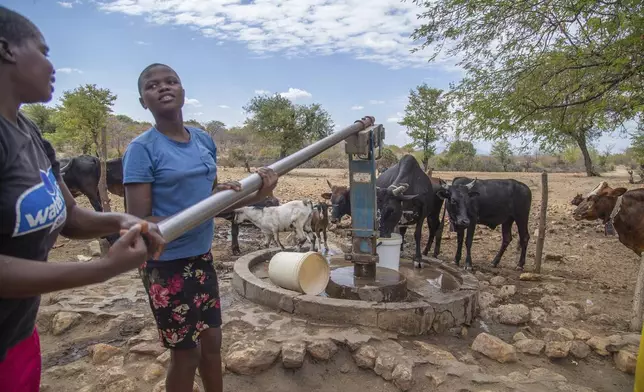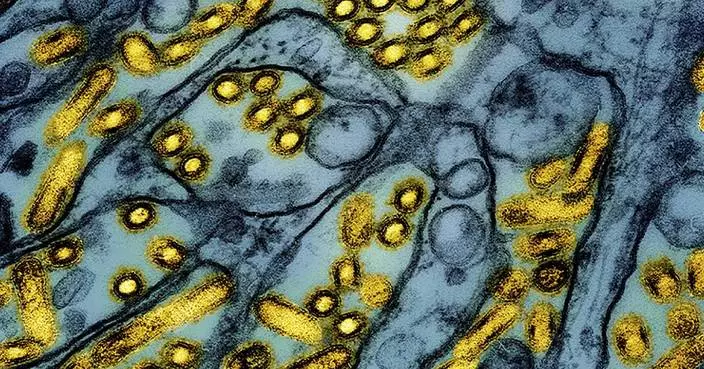CAPE TOWN, South Africa (AP) — Months of drought in southern Africa triggered by the El Niño weather phenomenon have had a devastating impact on more than 27 million people and caused the region's worst hunger crisis in decades, the United Nations' food agency said Tuesday.
The World Food Program warned it could become a “full-scale human catastrophe.”
Click to Gallery
Baobab trees stand in Chirundu, Zambia, Thursday, Sept. 26, 2024. (AP Photo/Themba Hadebe)
File — A woman scoops water from a hole she has dug in a dried up riverbed in Lusitu, Zambia, Wednesday, Sept. 18, 2024. (AP Photo/Themba Hadebe/File)
File — Villagers fetch water from a makeshift borehole in Mudzi, Zimbabwe, Tuesday, July 2, 2024. as the United Nations' food agency says months of drought in southern Africa, triggered by the El Nino weather phenomenon, has had a devastating impact on more than 27 million people and caused the region's worst hunger crisis in decades. (AP Photo/Aaron Ufumeli)
File — A women scoops water from a hole she has dug in a dried up riverbed in Lusitu, Zambia, Wednesday, Sept. 18, 2024. (AP Photo/Themba Hadebe/File)
FILE - A woman walks along a path in a drought-stricken field in Zvimba, rural Zimbabwe, Saturday, June, 26, 2021. (AP Photo/Tsvangirayi Mukwazhi, File)
File — Villagers fetch water from a makeshift borehole in Mudzi, Zimbabwe, Tuesday, July 2, 2024. as the United Nations' food agency says months of drought in southern Africa, triggered by the El Nino weather phenomenon, has had a devastating impact on more than 27 million people and caused the region's worst hunger crisis in decades. (AP Photo/Aaron Ufumeli/File)
File — Villagers pump water at a borehole in Mudzi, Zimbabwe, Tuesday, July 2, 2024.as the United Nations' food agency says months of drought in southern Africa, triggered by the El Nino weather phenomenon, has had a devastating impact on more than 27 million people and caused the region's worst hunger crisis in decades. (AP Photo/Aaron Ufumeli/File)
File — A man stands in a sun-baked dried up watering hole in Mana Pools National Park, Zimbabwe. Sunday, Oct. 27, 2019, as the United Nations' food agency says months of drought in southern Africa, triggered by the El Nino weather phenomenon, has had a devastating impact on more than 27 million people and caused the region's worst hunger crisis in decades. .(AP Photo/Tsvangirayi Mukwazhi/File)
A women scoops water from a hole she has dug in a dried up riverbed in Lusitu, Zambia, Wednesday, Sept. 18, 2024. (AP Photo/Themba Hadebe)
A woman scoops water from a hole she has dug in a dried up riverbed in Lusitu, Zambia, Wednesday, Sept. 18, 2024. (AP Photo/Themba Hadebe)
Five countries — Lesotho, Malawi, Namibia, Zambia and Zimbabwe — have declared national disasters over the drought and resultant hunger. The WFP estimates that about 21 million children in southern Africa are now malnourished as crops have failed.
Tens of millions in the region rely on small-scale agriculture that is irrigated by rain for their food and to make money to buy provisions. Aid agencies warned of a potential disaster late last year as the naturally occurring El Niño led to below-average rainfall across the region, while its impact has been exacerbated by warming temperatures linked to climate change.
“This is the worst food crisis in decades,” WFP spokesperson Tomson Phiri said. “October in southern Africa marks the start of the lean season, and each month is expected to be worse than the previous one until harvests next year in March and April. Crops have failed, livestock have perished and children are lucky to receive one meal per day.”
The five countries that declared drought-related disasters have pleaded for international aid, while Angola on the west coast of Africa and Mozambique on the east coast are also “severely affected,” Phiri said, showing the extent to which the drought has swept across the region.
“The situation is dire,” Phiri said. He said the WFP needs around $369 million to provide immediate help but has only received a fifth of that amid a shortfall in donations. The WFP has begun helping with food assistance and other critical support at the request of various governments in the region, he said.
Phiri said southern Africa's crisis came at a time of “soaring global needs,” with humanitarian aid also desperately required in Gaza, Sudan and elsewhere.
Other aid agencies have said the drought in southern Africa is especially harsh, with the United States aid agency, USAID, saying in June it was the most severe drought in 100 years during the January to March agricultural season, wiping out swathes of crops and food for millions.
El Niño, a weather phenomenon which warms parts of the central Pacific, has different impacts on weather in different parts of the world. The latest El Niño formed in the middle of last year and ended in June. It was blamed, along with human-caused climate change and overall ocean warmth, for a wild 12 months of heat waves and extreme weather.
In southern Africa, food prices have risen sharply in many areas affected by the drought, increasing the hardship. The drought has also had other damaging effects.
Zambia has lost much of its electricity and has been plunged into hours and sometimes days of blackouts because it relies heavily on hydroelectric power from the huge Kariba Dam. The water level of the dam is so low that it can hardly generate any power. Zimbabwe shares the dam and is also experiencing power outages.
Authorities in Namibia and Zimbabwe have resorted to killing wildlife, including elephants, to provide meat for hungry people.
Scientists say sub-Saharan Africa is one of the most vulnerable parts of the world to climate change because of a high dependency on rain-fed agriculture and natural resources. Millions of African livelihoods depend on the climate, while poor countries are unable to finance climate-resilience measures.
AP Africa news: https://apnews.com/hub/africa
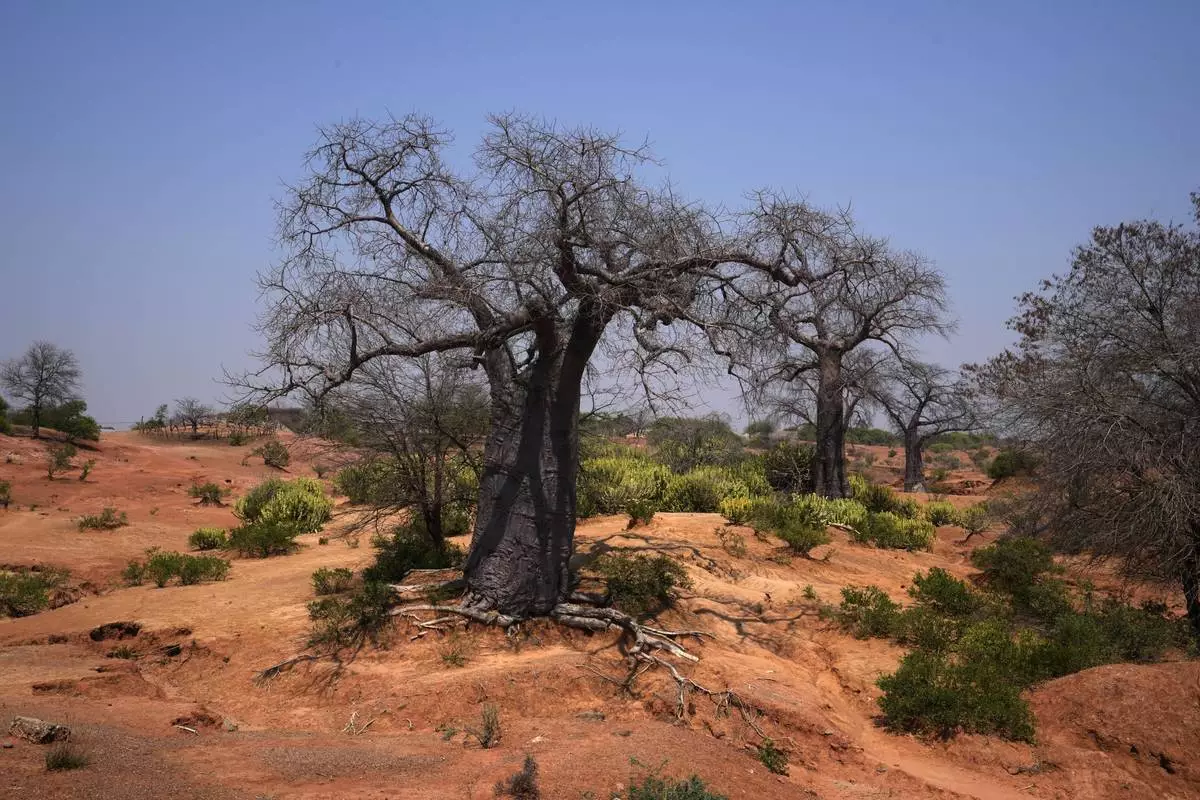
Baobab trees stand in Chirundu, Zambia, Thursday, Sept. 26, 2024. (AP Photo/Themba Hadebe)
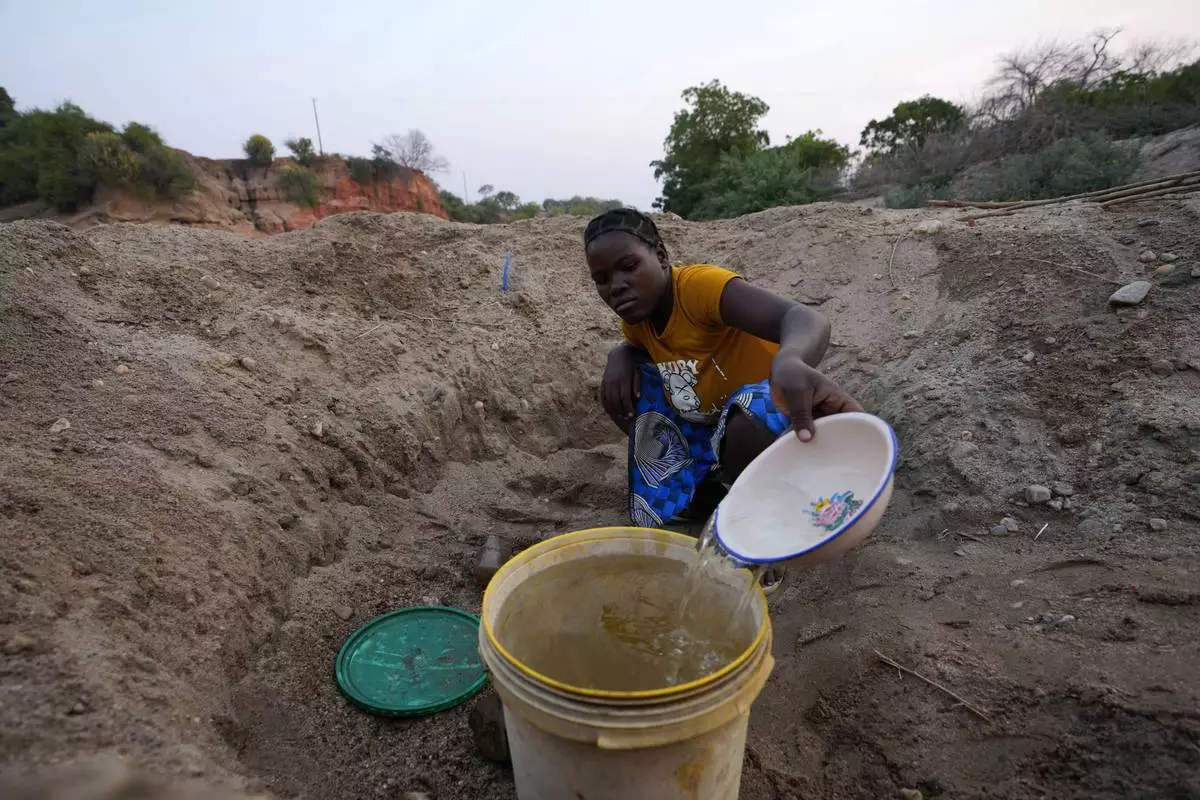
File — A woman scoops water from a hole she has dug in a dried up riverbed in Lusitu, Zambia, Wednesday, Sept. 18, 2024. (AP Photo/Themba Hadebe/File)
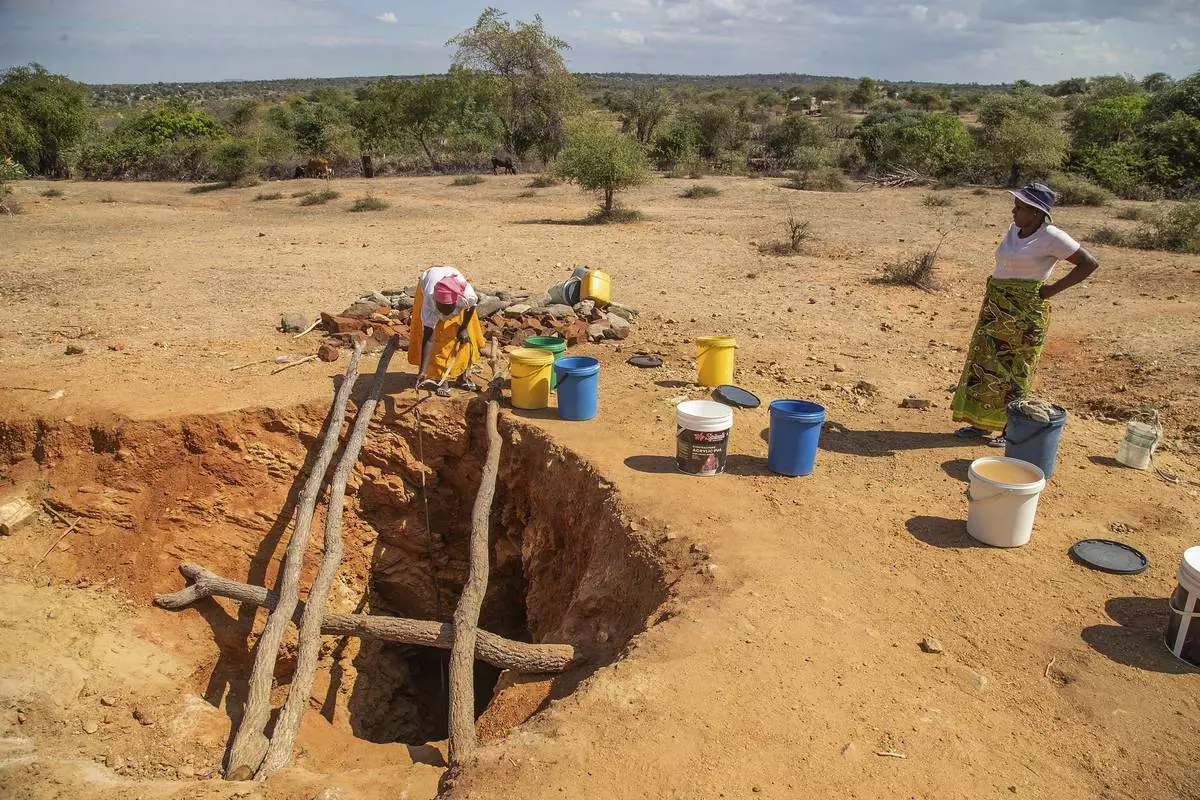
File — Villagers fetch water from a makeshift borehole in Mudzi, Zimbabwe, Tuesday, July 2, 2024. as the United Nations' food agency says months of drought in southern Africa, triggered by the El Nino weather phenomenon, has had a devastating impact on more than 27 million people and caused the region's worst hunger crisis in decades. (AP Photo/Aaron Ufumeli)
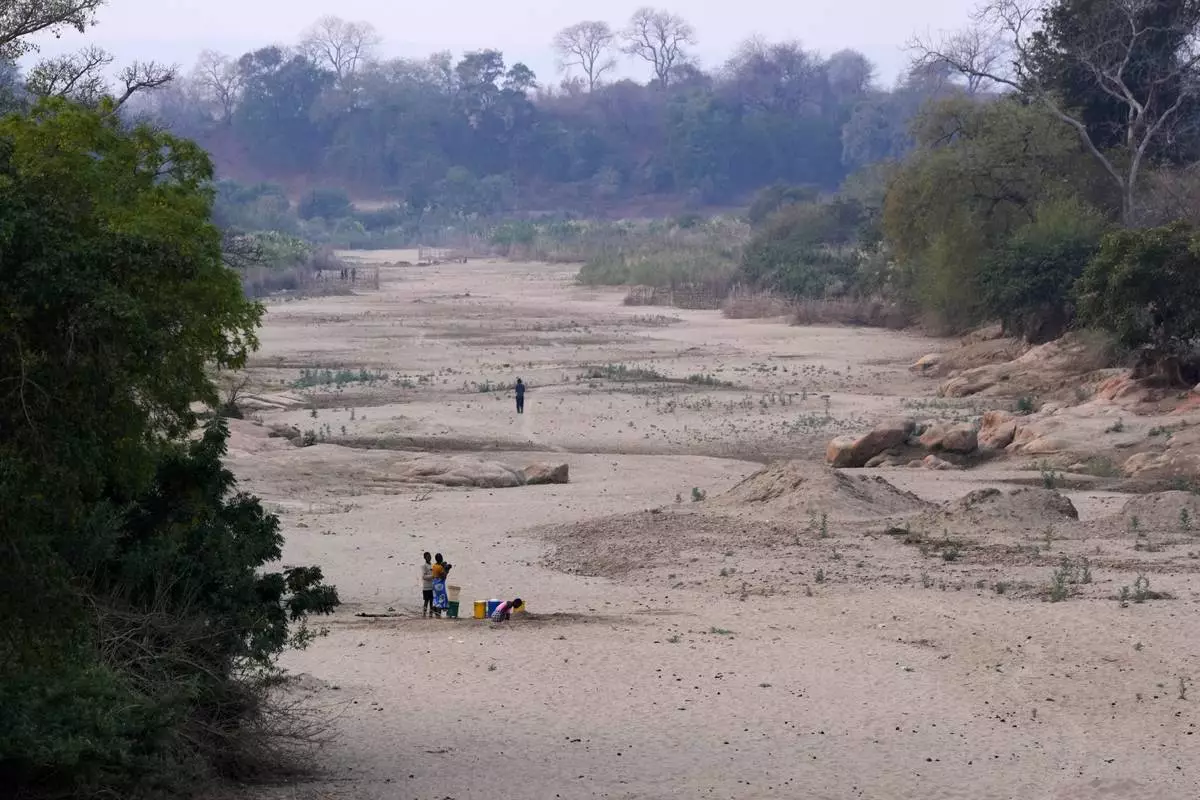
File — A women scoops water from a hole she has dug in a dried up riverbed in Lusitu, Zambia, Wednesday, Sept. 18, 2024. (AP Photo/Themba Hadebe/File)
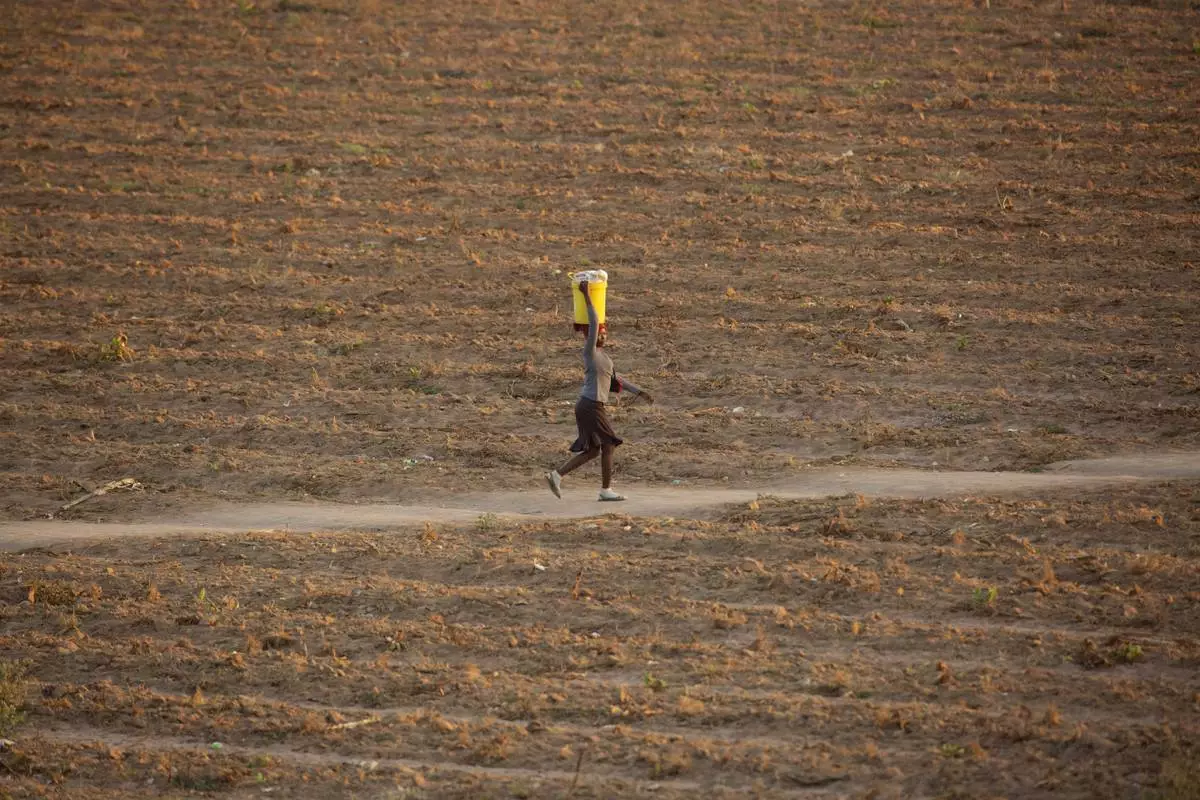
FILE - A woman walks along a path in a drought-stricken field in Zvimba, rural Zimbabwe, Saturday, June, 26, 2021. (AP Photo/Tsvangirayi Mukwazhi, File)
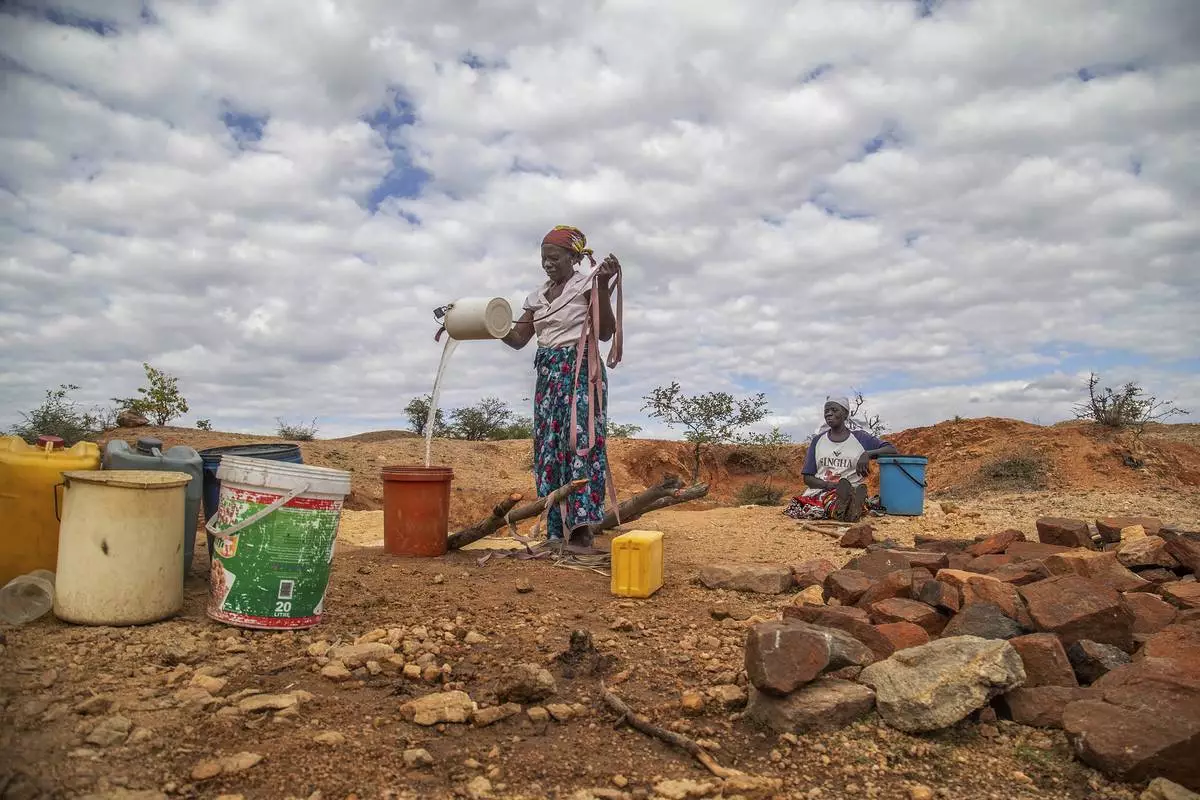
File — Villagers fetch water from a makeshift borehole in Mudzi, Zimbabwe, Tuesday, July 2, 2024. as the United Nations' food agency says months of drought in southern Africa, triggered by the El Nino weather phenomenon, has had a devastating impact on more than 27 million people and caused the region's worst hunger crisis in decades. (AP Photo/Aaron Ufumeli/File)

File — Villagers pump water at a borehole in Mudzi, Zimbabwe, Tuesday, July 2, 2024.as the United Nations' food agency says months of drought in southern Africa, triggered by the El Nino weather phenomenon, has had a devastating impact on more than 27 million people and caused the region's worst hunger crisis in decades. (AP Photo/Aaron Ufumeli/File)
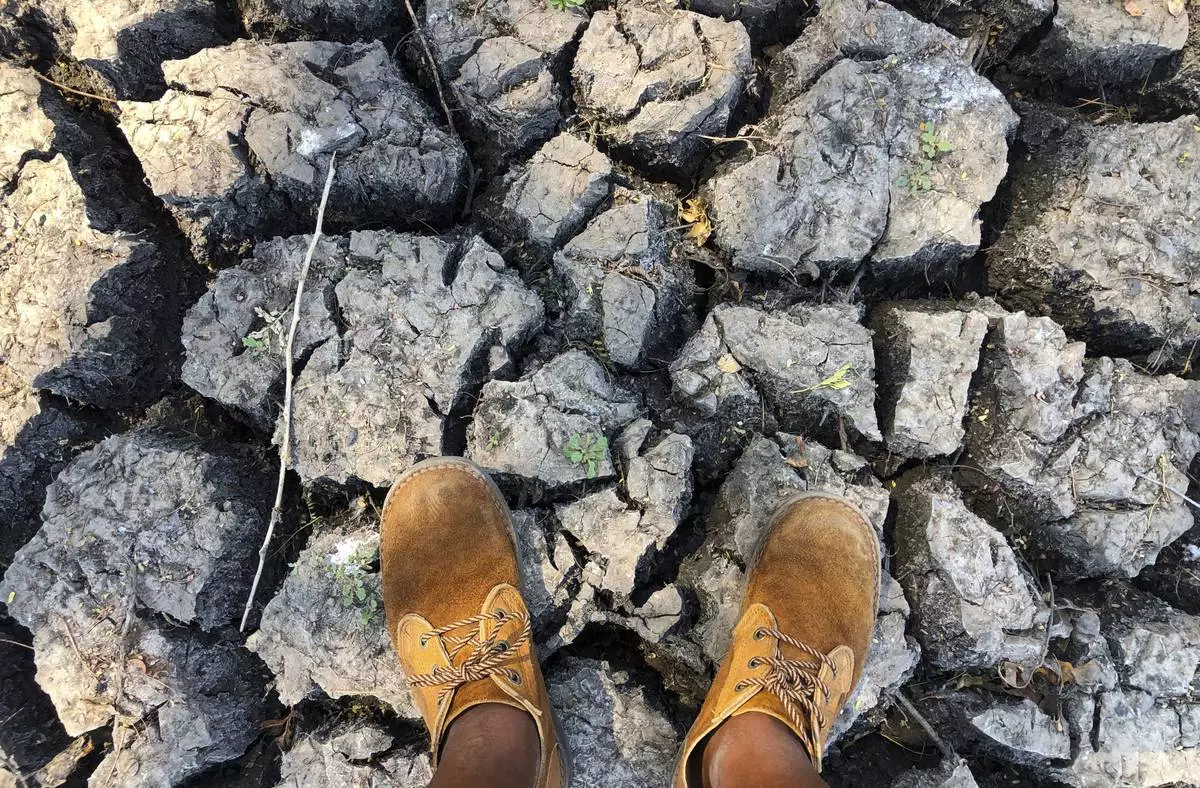
File — A man stands in a sun-baked dried up watering hole in Mana Pools National Park, Zimbabwe. Sunday, Oct. 27, 2019, as the United Nations' food agency says months of drought in southern Africa, triggered by the El Nino weather phenomenon, has had a devastating impact on more than 27 million people and caused the region's worst hunger crisis in decades. .(AP Photo/Tsvangirayi Mukwazhi/File)
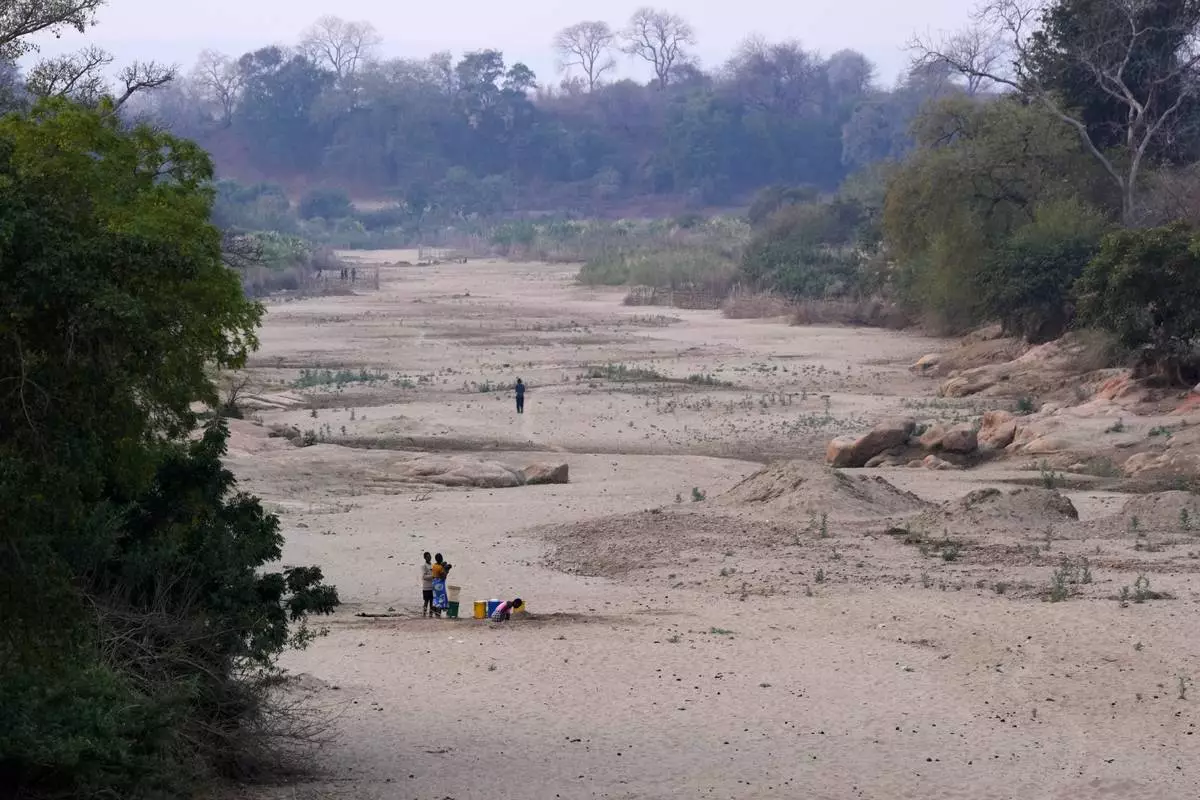
A women scoops water from a hole she has dug in a dried up riverbed in Lusitu, Zambia, Wednesday, Sept. 18, 2024. (AP Photo/Themba Hadebe)
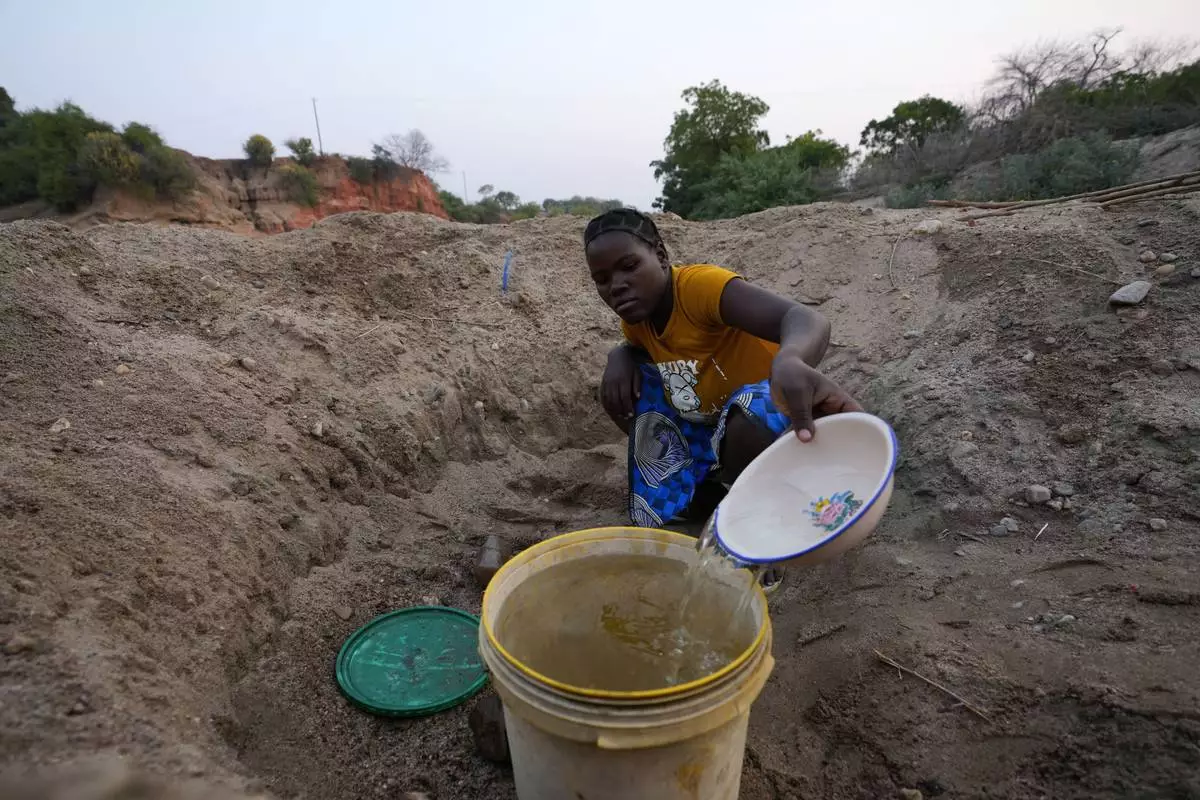
A woman scoops water from a hole she has dug in a dried up riverbed in Lusitu, Zambia, Wednesday, Sept. 18, 2024. (AP Photo/Themba Hadebe)
WASHINGTON (AP) — Facing a government shutdown deadline, the Senate rushed through final passage early Saturday of a bipartisan plan that would temporarily fund federal operations and disaster aid, dropping President-elect Donald Trump's demands for a debt limit increase into the new year.
House Speaker Mike Johnson had insisted Congress would “meet our obligations” and not allow federal operations to shutter ahead of the Christmas holiday season. But the day's outcome was uncertain after Trump doubled down on his insistence that a debt ceiling increase be included in any deal — if not, he said in an early morning post, let the closures “start now.”
The House approved Johnson's new bill overwhelmingly, 366-34. The Senate worked into the night to pass it, 85-11, just after the deadline. At midnight, the White House said it had ceased shutdown preparations.
“This is a good outcome for the country, ” Johnson said after the House vote, adding he had spoken with Trump and the president-elect “was certainly happy about this outcome, as well.”
President Joe Biden, who has played a less public role in the process throughout a turbulent week, was expected to sign the measure into law Saturday.
“There will be no government shutdown," Senate Majority Leader Chuck Schumer said.
The final product was the third attempt from Johnson, the beleaguered House speaker, to achieve one of the basic requirements of the federal government — keeping it open. And it raised stark questions about whether Johnson will be able to keep his job, in the face of angry GOP colleagues, and work alongside Trump and billionaire ally Elon Musk, who called the legislative plays from afar.
Trump's last-minute demand was almost an impossible ask, and Johnson had almost no choice but to work around his pressure for a debt ceiling increase. The speaker knew there wouldn’t be enough support within the GOP majority to pass any funding package, since many Republican deficit hawks prefer to slash the federal government and certainly wouldn’t allow more debt.
Instead, the Republicans, who will have full control of the White House, House and Senate next year, with big plans for tax cuts and other priorities, are showing they must routinely rely on Democrats for the votes needed to keep up with the routine operations of governing.
“So is this a Republican bill or a Democrat bill?” scoffed Musk on social media ahead of the vote.
The drastically slimmed-down 118-page package would fund the government at current levels through March 14 and add $100 billion in disaster aid and $10 billion in agricultural assistance to farmers.
Gone is Trump’s demand to lift the debt ceiling, which GOP leaders told lawmakers would be debated as part of their tax and border packages in the new year. Republicans made a so-called handshake agreement to raise the debt limit at that time while also cutting $2.5 trillion in spending over 10 years.
It’s essentially the same deal that flopped the night before in a spectacular setback — opposed by most Democrats and some of the most conservative Republicans — minus Trump’s debt ceiling demand.
But it's far smaller than the original bipartisan accord Johnson struck with Democratic and Republican leaders — a 1,500-page bill that Trump and Musk rejected, forcing him to start over. It was stuffed with a long list of other bills — including much-derided pay raises for lawmakers — but also other measures with broad bipartisan support that now have a tougher path to becoming law.
House Democrats were cool to the latest effort after Johnson reneged on the hard-fought bipartisan compromise.
Rep. Rosa DeLauro, the top Democrat on the Appropriations Committee, said it looked like Musk, the wealthiest man in the world, was calling the shots for Trump and Republicans.
“Who is in charge?” she asked during the debate.
Still, the House Democrats put up more votes than Republicans for the bill's passage. Almost three dozen conservative House Republicans voted against it.
“The House Democrats have successfully stopped extreme MAGA Republicans from shutting down the government, crashing the economy and hurting working-class Americans all across the nation,” House Democratic Leader Hakeem Jeffries said, referring to Trump's “Make America Great Again” slogan.
In the Senate, almost all the opposition came from the Republicans — except independent Sen. Bernie Sanders, who said Musk's interference was “not democracy, that's oligarchy.”
Trump, who has not yet been sworn into office, is showing the power but also the limits of his sway with Congress, as he intervenes and orchestrates affairs from Mar-a-Lago alongside Musk, who is heading up the new Department of Government Efficiency.
The incoming Trump administration vows to slash the federal budget and fire thousands of employees and is counting on Republicans for a big tax package. And Trump's not fearful of shutdowns the way lawmakers are, having sparked the longest government shutdown in history in his first term at the White House.
“If there is going to be a shutdown of government, let it begin now,” Trump posted early in the morning on social media.
More important for the president-elect was his demand for pushing the thorny debt ceiling debate off the table before he returns to the White House. The federal debt limit expires Jan. 1, and Trump doesn't want the first months of his new administration saddled with tough negotiations in Congress to lift the nation's borrowing capacity. Now Johnson will be on the hook to deliver.
“Congress must get rid of, or extend out to, perhaps, 2029, the ridiculous Debt Ceiling,” Trump posted — increasing his demand for a new five-year debt limit increase. "Without this, we should never make a deal."
Government workers had already been told to prepare for a federal shutdown that would send millions of employees — and members of the military — into the holiday season without paychecks.
Biden has been in discussions with Jeffries and Schumer, but White House press secretary Karine Jean-Pierre said: “Republicans blew up this deal. They did, and they need to fix this.”
As the day dragged on, Senate Republican Leader Mitch McConnell stepped in to remind colleagues “how harmful it is to shut the government down, and how foolish it is to bet your own side won’t take the blame for it.”
At one point, Johnson asked House Republicans at a lunchtime meeting for a show of hands as they tried to choose the path forward.
It wasn’t just the shutdown, but the speaker’s job on the line. The speaker’s election is the first vote of the new Congress, which convenes Jan. 3, and some Trump allies have floated Musk for speaker.
Johnson said he spoke to Musk ahead of the vote Friday and they talked about the “extraordinary challenges of this job.”
Associated Press writers Kevin Freking, Stephen Groves, Mary Clare Jalonick, Darlene Superville and Bill Barrow contributed to this report.

Senate Majority Leader Chuck Schumer, D-N.Y., celebrates as the Senate begins voting on the government funding bill just in time to meet the midnight deadline, at the Capitol in Washington, Friday, Dec. 20, 2024. (AP Photo/J. Scott Applewhite)

Senate Majority Leader Chuck Schumer, D-N.Y., celebrates as the Senate begins voting on the government funding bill just in time to meet the midnight deadline, at the Capitol in Washington, Friday, Dec. 20, 2024. (AP Photo/J. Scott Applewhite)

Speaker of the House Mike Johnson, R-La., talks to reporters after passing the funding bill to avert the government shutdown at the Capitol in Washington, Friday, Dec. 20, 2024. (AP Photo/Jose Luis Magana)

Speaker of the House Mike Johnson, R-La., talks to reporters after passing the funding bill to avert the government shutdown at the Capitol in Washington, Friday, Dec. 20, 2024. (AP Photo/Jose Luis Magana)

The Capitol is pictured in Washington, Friday, Dec. 20, 2024. (AP Photo/J. Scott Applewhite)

Speaker of the House Mike Johnson, R-La., emerges from a closed-door meeting with fellow Republicans at the Capitol in Washington, Friday, Dec. 20, 2024. (AP Photo/J. Scott Applewhite)

Speaker of the House Mike Johnson, R-La., emerges from a closed-door meeting with fellow Republicans at the Capitol in Washington, Friday, Dec. 20, 2024. (AP Photo/J. Scott Applewhite)

Rep. Dusty Johnson, R-S.D., talks with reporters after attending a meeting with Speaker of the House Mike Johnson, R-La., as the House works on a spending bill to avert a shutdown of the Federal Government, Friday, Dec. 20, 2024, at the Capitol in Washington. (AP Photo/John McDonnell)

FILE - President-elect Donald Trump poses for a photo with Dana White, Kid Rock and Elon Musk at UFC 309 at Madison Square Garden, Nov. 16, 2024, in New York. (AP Photo/Evan Vucci, File)

Speaker of the House Mike Johnson, R-La., talks briefly to reporters just before a vote on an interim spending bill to prevent a government shutdown, at the Capitol in Washington, Thursday, Dec. 19, 2024. The vote failed to pass. (AP Photo/J. Scott Applewhite)

President-elect Donald Trump speaks during a news conference at Mar-a-Lago, Monday, Dec. 16, 2024, in Palm Beach, Fla. (AP Photo/Evan Vucci)












